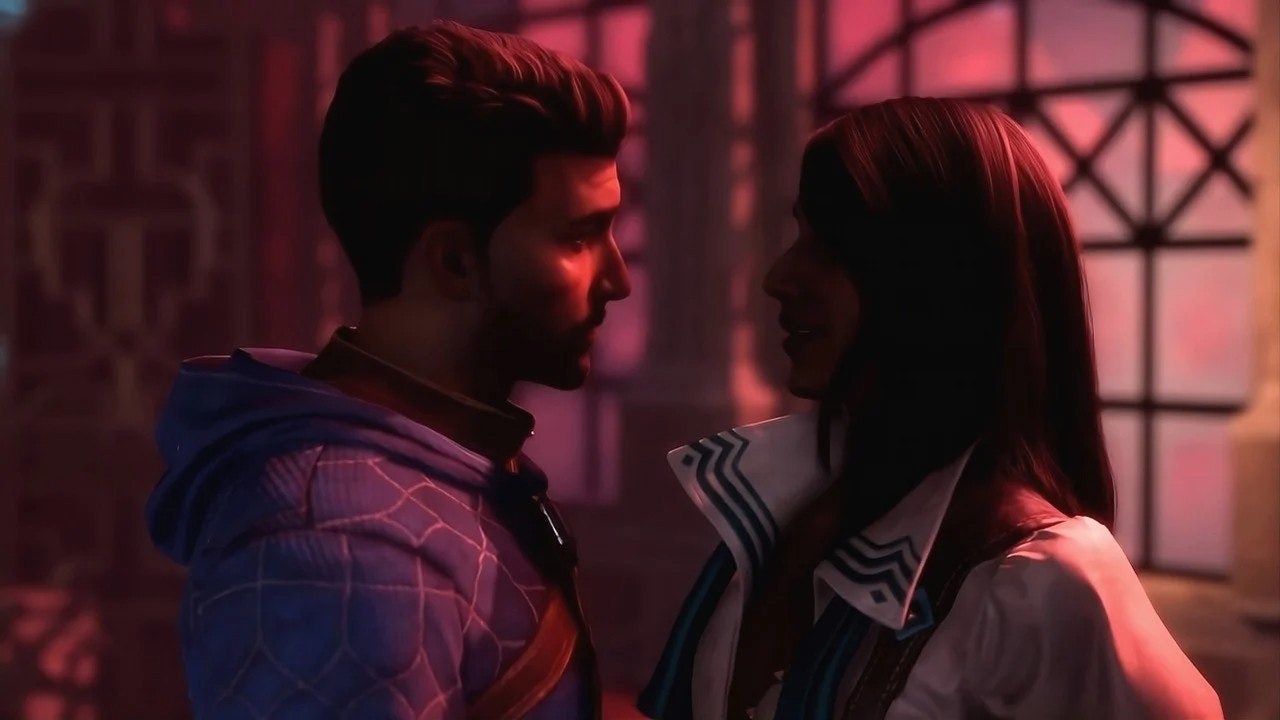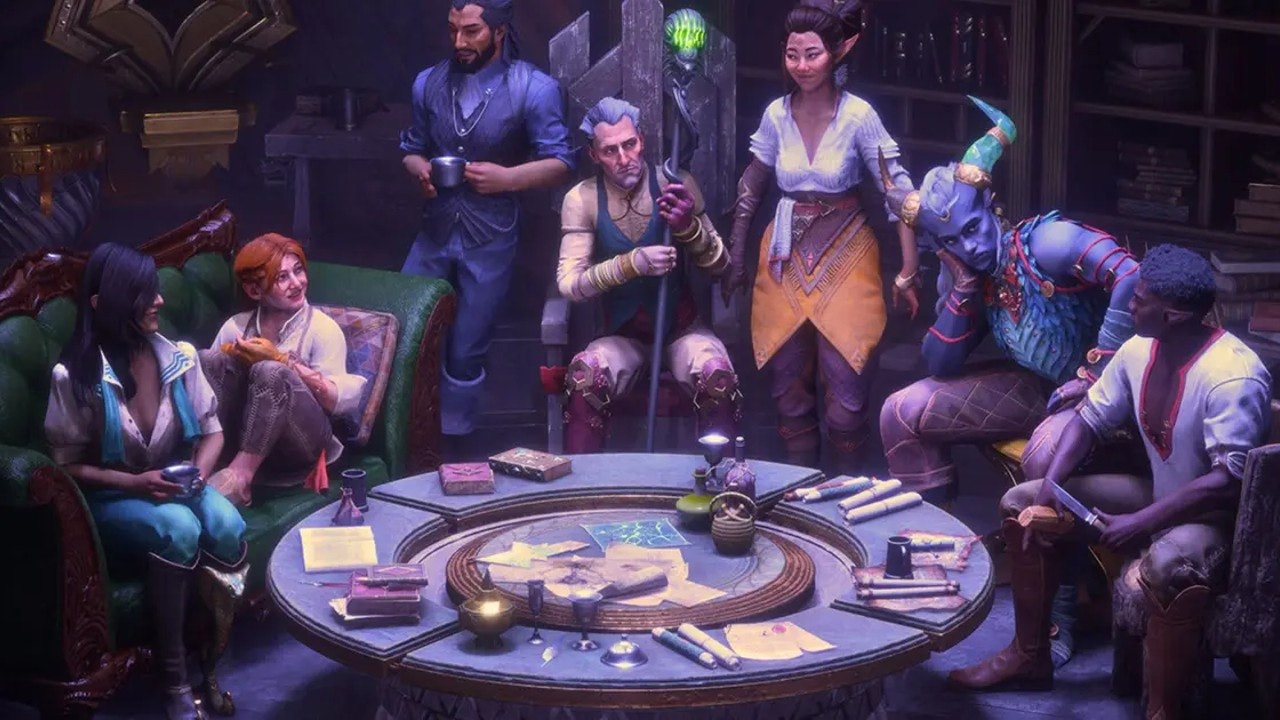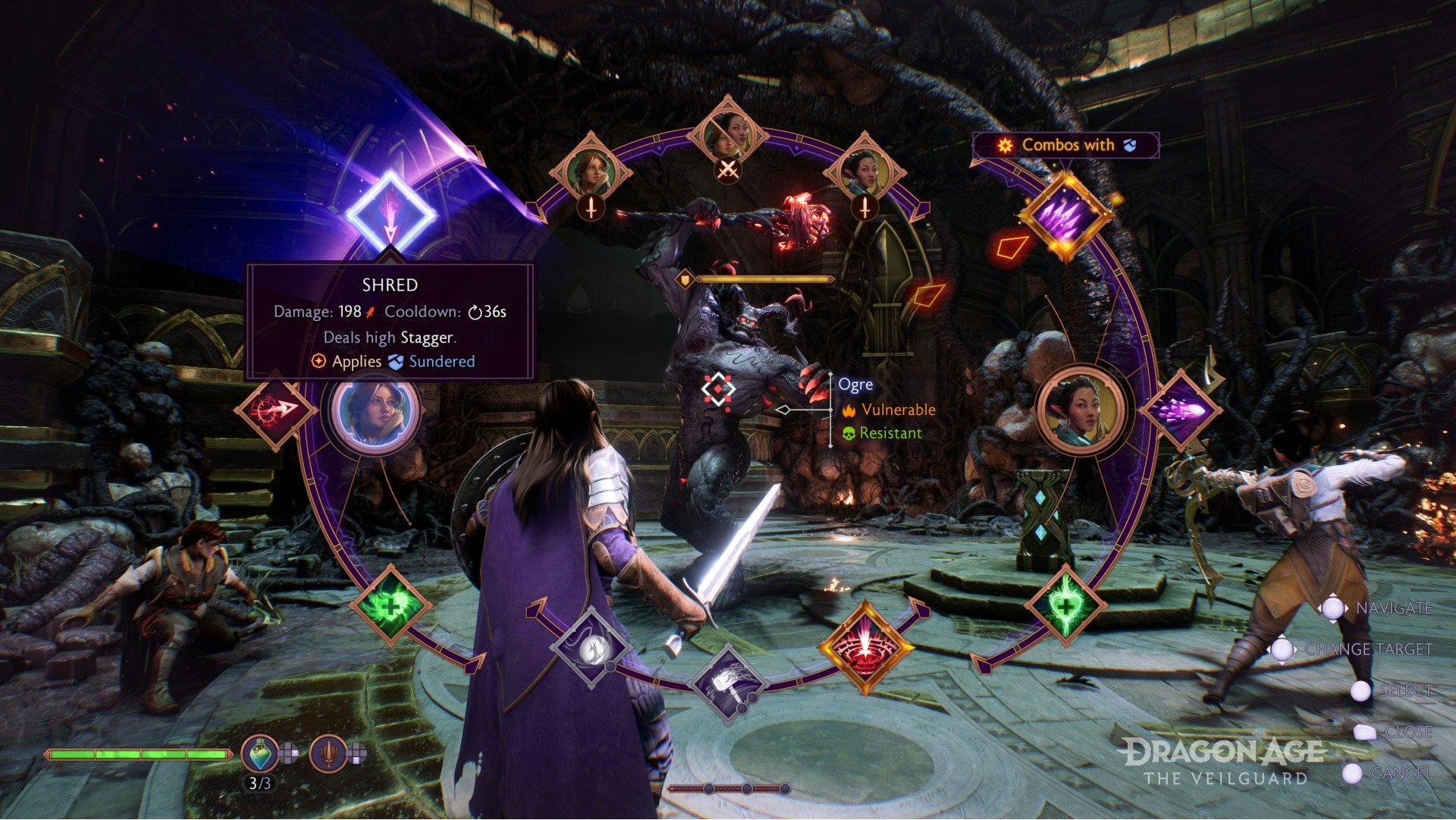
After playing a half-dozen hours of Dragon Age: The Veilguard, one thought stuck with me — this isn’t the Dragon Age that I knew from ten years ago, it’s something drastically different. But I staunchly believe that’s a good thing.
The Veilguard has the bones of what made the series so special, key ingredients that have been in every game — a dazzling fantasy world filled with personality, dynamic companions with their own complex histories and stories, deep lore to dive into, and real emotion behind its storytelling. Although those elements are all present, they’re woven into something that feels different than past Dragon Age games, in terms of overall structure and minute-to-minute gameplay. Veilguard’s shift away from open world and toward action combat is a seismic shift for the franchise, but after playing through a sizable chunk of the game, nearly any worries or reservations I’ve had have vanished. This is a good old BioWare RPG that clearly has a unique vision, and has committed to it completely.
Thank the Maker

Across six hours I had the chance to play through multiple different sections of Veilguard — the entire prologue, exploring your main base, The Lighthouse, recruiting Lucanis, a major story choice, exploring the Italian canal-style city of Treviso, and finally the assault on the Grey Warden headquarters Weisshaupt. That’s a lot to dig into, and we’ll cover bits of it all, but there are two specific factors to focus on, the biggest pieces that stand out about Veilguard — combat and narrative.
As I’m currently replaying Inquisition, the story stands out most of all. Veilguard is a game with a ton of dialogue, a ton of cutscenes, and a ton of narrative. Story is clearly the number one thing that BioWare has focused on, building out the world of Northern Thedas with rich lore, various conflicting governments and organizations, and party members that genuinely feel meaningfully integrated into the world and plot.
That story focus begins with the character creator, one of the most absurdly detailed systems I’ve ever seen in a video game. It rivals Dragon’s Dogma 2 as the most robust creator I’ve seen, letting you fine-tune nearly everything about your protagonist — from crow’s feet, dimples, body shapes, and ear lobe sizes to options for top surgery scars and various pronouns. It’s clear that the creator has a huge focus on inclusivity, and even though I only got to spend 40 minutes with it, there were dozens upon dozens of drastically different characters I could have made.
A Whole New World

In Veilguard, you play a character nicknamed “Rook,” who ends up leading a band of ragtag heroes to stop Solas, the elven god (also known as the Dread Wolf) who plans to destroy the Veil to merge the mortal and spirit worlds. Your Rook’s identity is at the heart of Veilguard, and that doesn’t just manifest in their physical appearance, but also in their background and history. There are six backgrounds to choose from, and I chose the Shadow Dragons — a kind of resistance group fighting the corrupt rulers and slavers of Tevinter.
This choice changed quite a bit of dialogue in the prologue, which takes place in Tevinter’s capital of Minrathous, but I also noticed quite a few details popping up throughout my playtime. In particular, it gave me an interesting bond and more to talk about with the party member Neve, who’s also a Shadow Dragon.
The first three sections I played through in Veilguard all felt markedly different, both in terms of tone and visual aesthetics. The decadent magical neon-lit streets of Minrathous stand in stark contrast to the beautiful flowing rivers and luscious woods of Arlathan Forest. These visual differences are accentuated by tonal shifts — the prologue has an almost panicked high-speed intensity as your rush to stop a ritual, while Arlathan lets you meander around the idyllic forest, poking into ancient ruins and secrets. My personal favorite, however, was the mission to recruit the assassin Lucanis, a covert heist where my party had to break into an underwater prison.

Even though Veilguard isn’t an open world game, there’s clearly some degree of exploration, with environments having lots of little secrets and Easter Eggs to uncover. The place this is most easily seen, however, is your base, The Lighthouse. This mystical location is located in the spirit world of the Fade, and where you retire between missions. Here you can find bits of lore, talk to party members, improve your equipment, and all the other base stuff you need. But what’s really interesting is the roads of the Fade that you use to get to other locations.
Your party uses elven mirrors called Eluvians to travel between locations, but you need to traverse the Fade to get to them. This essentially created a kind of exploration zone that links all the locations together, and there are a ton of secrets and treasures to find, including playable memories of Solas’ past (and yes, you even get to see him with hair). All of these elements in the Fade give Veilguard that element of exploration that’s always been crucial to Dragon Age, giving you bits to help flesh out the lore and story while also giving you tangible rewards like new equipment or items.
Join the Party

While the world of Veilguard is interesting on its own, even more fascinating is how the game’s party members tie into and enrich it. Each party member in the game is tied to a major location, and they don’t feel like just companions, but major players in the events that are happening.
The sections I played feature a lot of Lucanis, and boy is he bound to be a fan favorite. The debonair assassin is overflowing with charm, much like Dragon Age: Origins’ Zevran, but he also hides a dark secret — he’s possessed by a demon. I won’t specify which demon to avoid spoilers, but Veilguard has a delightfully fun trick with Lucanis where his demon speaks to him in cutscenes, appearing to the player but not to other characters. It creates a kind of devil-on-the-shoulder situation that leads to some genuinely hilarious moments.
While Lucanis was definitely the character I saw the most of, each companion feels vibrantly unique. Neve is a mage with a biting wit and a fair amount of insight into the workings of Tevinter, the necromancer Emmerich is a bit snooty and overbearing but has a kind underside, Belara is a bubbly and hyperactive but dazzlingly brilliant, and Harding continues to be a naive, but sweet and stalwart friend. Unfortunately, I didn’t get much time to know Davrin and Taash, but have every expectation they’ll feel just as unique.

What’s interesting about companions is that they can interject during story conversations, and have a ton of unique dialogue in missions, even when you can take whoever you want. For all intents and purposes, these are companions that are seeing events play out right alongside your character. But the story will also present you with major choices that can alter your relationships with companions. Although I can’t say what happens, a major choice had me siding with either Neve or Lucanis, drastically changing not just how those two characters feel about Rook, but also the state of the world itself.
The Lighthouse is where you’ll get to learn about and bond with these characters the most, and even outside of major conversations, there are some fun little details — like playing rock, paper, scissors against Emmerich’s skeleton companion Mandrred. But it’s clear companions are integrated into the game at every step, made to feel important at all times, even in combat.
A Real Knockout

If you haven’t gotten the sense that Veilguard is a different beast already, combat is where the differences become most obvious. I kept thinking that Veilguard reminds me of Final Fantasy XVI, not necessarily in how it plays, but in how it transforms the elements of the franchise.
You still have your Warrior, Rogue, and Mage classes, but each one feels drastically different in how they approach combat. Overall there’s a real emphasis on speed, stringing combos together, and dodging. Every class now has a melee and a ranged attack — Rogues use their bows while Warriors throw their shield or weapon, and Mages have a kind of Iron Man-like beam. On top of basic attacks and dodges, you have multiple skills you can use, each with a cooldown, and each party member has multiple skills you can activate in a tactics menu that slows time.
The focus in Veilguard is entirely on your character, and while you have party members, it’s not quite the party-based system of past games. There doesn’t seem to be a way for party members to get downed, meaning you mostly have to concern yourself with your own health and well-being. Companions are more like a tool in your toolbox, pieces you need to use to come out on top in each battle.

But what really strikes me about Veilguard’s combat is simply how well it flows, and how satisfying it feels to play. The game absolutely nails the “feel” of combat, with strikes that feel weighty and crunchy, a host of options that add strategy into all the action, and a diverse array of enemies that are genuinely challenging.
Rogue is the surprising standout of the three classes, letting me dart around the battlefield to unleash a flurry of attacks, before jumping out and unleashing a rain of arrows on enemies — all while my companions soak up blows and distract opponents.
Veilguard’s combat is maybe what surprised me the most, I won’t dive into the nitty-gritty details as there’ll be plenty of footage to watch — but I’m astounded at how good it feels. Controls are tight and responsive, there’s a real satisfying challenge, battles feel hectic but manageable. Each and every fight was a blast that had me wanting more.
An Uncertain Future

Before playing Veilguard, I had serious reservations about what this series would look like after ten years, and how it could stay relevant. That thought is now the furthest thing from my mind, as Veilguard feels like its own beast in every way. There’s clearly a vision and style the development team stuck with for this game, through thick and thin. Ultimately, there’s still a lot of unknowns on how the story will pan out, how well-written the companion’s arcs are, and if combat can remain satisfying and fresh for dozens of hours.
But at the very least Veilguard is unique, it’s a game doing its own thing that doesn’t care about what pre-conceived notions the player has. In a series that’s radically changed with each entry, that could just be the right approach — no matter the end result.







